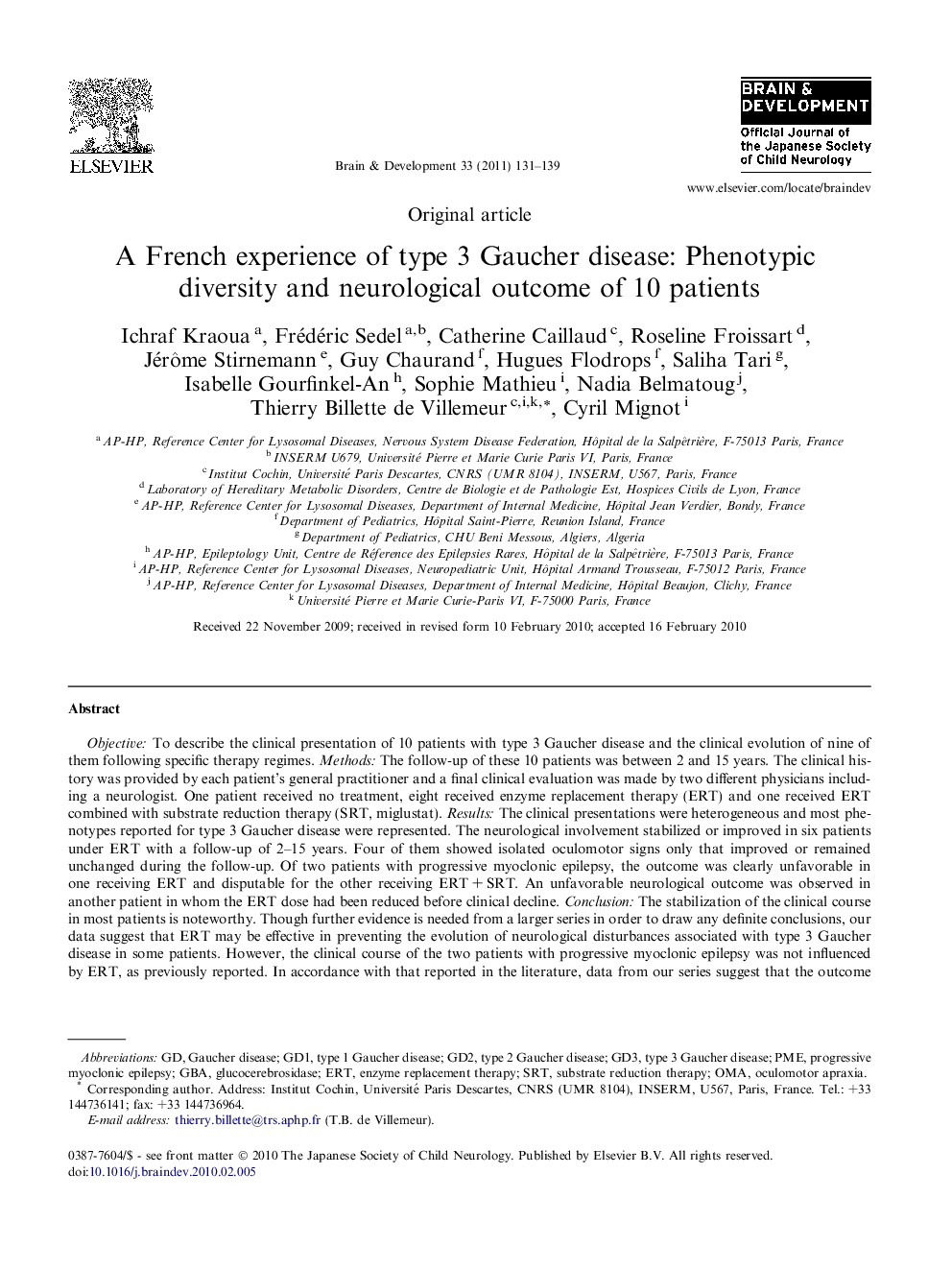| Article ID | Journal | Published Year | Pages | File Type |
|---|---|---|---|---|
| 3037750 | Brain and Development | 2011 | 9 Pages |
ObjectiveTo describe the clinical presentation of 10 patients with type 3 Gaucher disease and the clinical evolution of nine of them following specific therapy regimes. Methods: The follow-up of these 10 patients was between 2 and 15 years. The clinical history was provided by each patient’s general practitioner and a final clinical evaluation was made by two different physicians including a neurologist. One patient received no treatment, eight received enzyme replacement therapy (ERT) and one received ERT combined with substrate reduction therapy (SRT, miglustat). Results: The clinical presentations were heterogeneous and most phenotypes reported for type 3 Gaucher disease were represented. The neurological involvement stabilized or improved in six patients under ERT with a follow-up of 2–15 years. Four of them showed isolated oculomotor signs only that improved or remained unchanged during the follow-up. Of two patients with progressive myoclonic epilepsy, the outcome was clearly unfavorable in one receiving ERT and disputable for the other receiving ERT + SRT. An unfavorable neurological outcome was observed in another patient in whom the ERT dose had been reduced before clinical decline. Conclusion: The stabilization of the clinical course in most patients is noteworthy. Though further evidence is needed from a larger series in order to draw any definite conclusions, our data suggest that ERT may be effective in preventing the evolution of neurological disturbances associated with type 3 Gaucher disease in some patients. However, the clinical course of the two patients with progressive myoclonic epilepsy was not influenced by ERT, as previously reported. In accordance with that reported in the literature, data from our series suggest that the outcome of patients undergoing ERT depends on the type of clinical involvement, treatment onset and dose. Genotype may also be an important factor, with p.L444P/p.L444P possibly indicating a better outcome.
